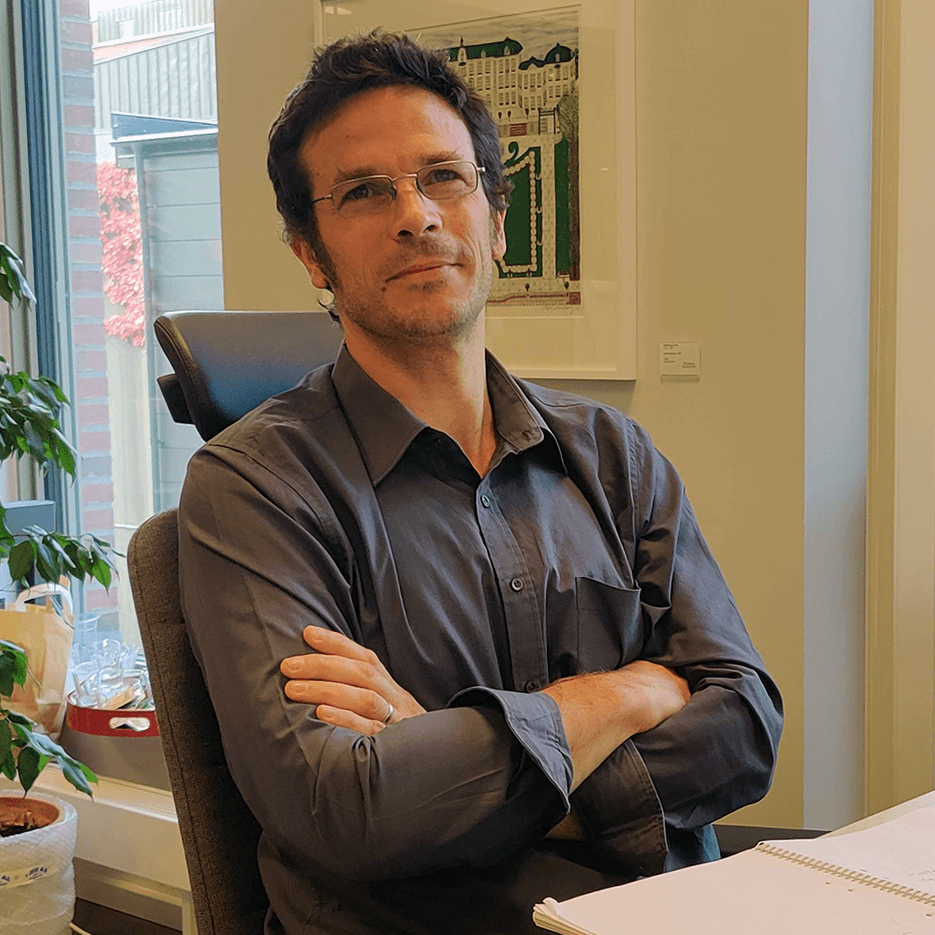UrbanT seminar #1.
October 29, 12:10 – 12:50+
In this talk I will present an overview of different projects and applied research activities that brought me from the building physics domains up to the gate of urban scale analyses.
Building physics starts by the building envelope and the heat transfer process that occurs within the material up to the construction stage. Natural and forced convection coupled with latent heat storage can improve the overall envelope efficiency, making the envelope more than just a separation between ambiences. Since occupants need comfortable and healthy indoor ambiences, mass transfer applied to indoor ventilation is discussed. Some approaches to studying the driving forces and their balances are presented through several applications. Even though heat and mass transfers are at the basis of building physics, studying building energy needs to incorporate a higher scaling step: the global system, with occupants. Distilled from large-scale experiments on single-family houses, several trends to be addressed by applied research are discussed. For instance, it was shown that a simple but robust (and market competitive) control-command process for a simple PV-panel coupled to a storage unit (DHW tank or Li battery) is still missing. At last, a larger project with a grid-free solution for a semi-office building is presented. It is oriented as a real scale testbed with high constraint (real use) and partially controllable through user’s implication and suggestion from EMS (Energy Management System), It aims at challenging energy management strategies for the building and studying which services it could provide to its neighbours.

Doctor in building physics, Engineer in fluid dynamics and mechanics
Xavier started his doctoral studies in 2004 in which he focused on heat transfer and latent heat storage embedded in the building envelope. He defended his PhD in 2007 at University of Joseph Fourier, Grenoble, France. He spent afterward 8 years in the French Institute of Building Physics (CSTB) as a researcher in heat and mass transfers, mainly applied to residential and industrial ventilation. Aside from research activities, he headed, the two last years at CSTB, the ventilation lab and was thus closer to manufacturers concerns and field feedbacks. He joined afterwards the French Commission for Energy (CEA) where he spent the last five years as a researcher and senior project manager. Keeping the applied research in residential ventilation, his activities also concerned the building energy consumption, from the single-family house with solar panel up to the office building disconnected from the grid with electrochemistry and hydrogen storage facilities. During the last 13 years, he supervised three PhD and launched a fourth one that started in March 2019. He authors or co-authors 10 peer-reviewed journal articles and 28 peered review congress papers.
Recent and relevant publications
- X.Faure et O.Ouvrier-Bonnaz, Demand control ventilation with hygro passive sensors: impact sensor’s characteristics, International Journal of Ventilation, Volume 18, 2019 – Issue 4, Pages 246-262. https://doi.org/10.1080/14733315.2018.1518056
- J.Goffart, M.Woloszyn, X.Faure, F.Wurtz, L.Gondian, et al.. Overview Of A Large Scale Monitoring Project Of Energy Positive Houses: Complementarity Between Simulations And Measurements. Building Simulation 2019, Sep 2019, Rome, Italy. https://hal.archives-ouvertes.fr/hal-02173856/
- X.Faure, F.Losfled, I.Pollet, E.Wurtz, O.Ouvrier-Bonnaz, Resilient Demand Control Ventilation system for dwellings, 39th AIVC-Congress, Juan Les Pins, FRANCE, sept. 2018. https://www.aivc.org/resource/resilient-demand-control-ventilation-system-dwellings?volume=37602
- X.Faure et N.Le Roux, Time dependent flows in displacement ventilation considering the volume envelope heat transfers, Building & Environment, 2012, vol.50, pp. 221-230. https://doi.org/10.1016/j.buildenv.2011.11.007


Recent Comments